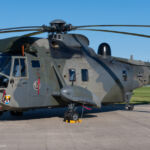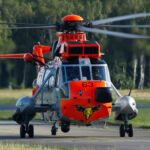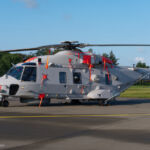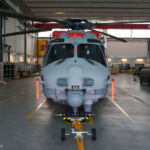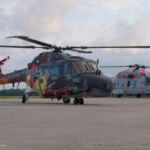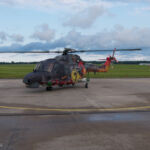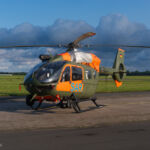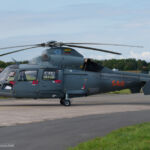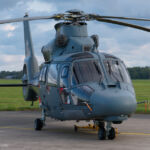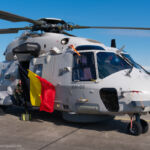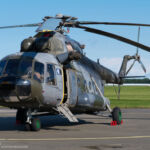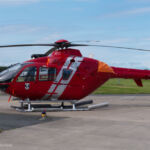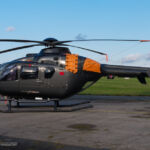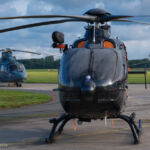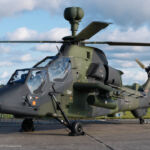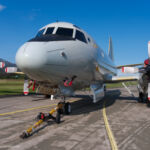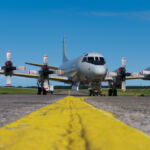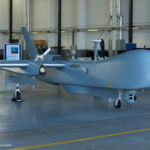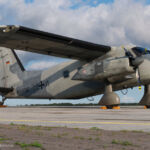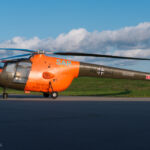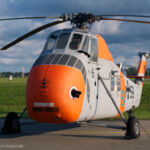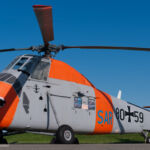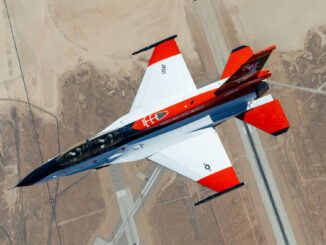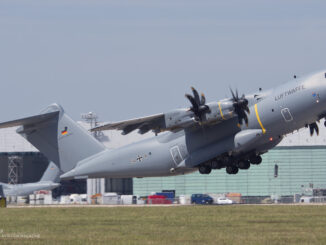 Between 24th and 28th August 2023, the latest edition of Galileo SAR Meet took place in Nordholz air base, at the North Sea coast. Search and rescue crews from Belgium, Italy, Lithuania, the Czech Republic and Germany participated in the event that included symposium focused on the latest development in SAR operations, crew flying competition, as well as family day and a spotter day.
Between 24th and 28th August 2023, the latest edition of Galileo SAR Meet took place in Nordholz air base, at the North Sea coast. Search and rescue crews from Belgium, Italy, Lithuania, the Czech Republic and Germany participated in the event that included symposium focused on the latest development in SAR operations, crew flying competition, as well as family day and a spotter day.
The Galileo SAR service was officially launched on 15th December 2016, as a part of Galileo Initial Services and the European Union space programme. Within that service, the Galileo satellite system, commonly nicknamed ´the European GPS´, was used to shorten reaction time during search and rescue operations by swiftly relaying radio beacon distress signals to relevant SAR stations. Each of the Galileo satellites, besides its main navigation and timing modules, embarks a SAR transponder to receive 406 MHz signals emitted by distress beacons. The signals and their approximate position are then transferred to rescue authorities via Galileo satellites and additional three ground stations located across Europe.
In January of 2020, the Galileo SAR system was enhanced with Return Link Service. Since that time, the system not only locates people in distress and sends their location to search and rescue stations, but also provides an automatic acknowledgement message back to the user, therefore informing the rescue signal was received and rescue procedures launched.
In addition, the Galileo SAR system is fully integrated in the International Rescue Network Cospas/Sarsat, bringing the best possible quality in terms of detection speed and location accuracy. According to official information, in case of relevant request for help with use of the Galileo SAR system, localisation of the distress signal has been shortened to ten minutes and two kilometres (comparing to four hours and ten kilometres without the system).
Since the beginning of the Galileo SAR system, the European Union actively supports training and integrity of the European search and rescue units. Periodic meeting of the search and rescue crews, called Galileo SAR Meet, is an example of such activities and is held to improve interoperability of the crews, better understanding of the Galileo SAR system, as well as to provide information about the latest developments in the SAR area.

The first Galileo SAR Meet took place in October of 2016, at Koksijde air base in Belgium. Similarly to NATO Tiger Meet, the next edition of the Galileo meeting is usually organized by the unit that was announced the winner of crew competition.
The 2023 edition of Galileo SAR Meet was organized by the German Naval Aviation (Marineflieger), namely its Nordholz-based unit – Marinefliegergeschwader 5 (MFG 5 – Naval Air Wing 5).
Nordholz is a small village in Lower Saxony but also one of the oldest aviation locations in Germany. The pioneering years are dated back to 1912, soon followed by 800-hectare air base built there in 1914. Complete history of the airfield and naval units based there can be found here, in our article issued in June of 2020.
Currently, MFG 5 is the sole helicopter unit of the German Navy, equipped with Sea King Mk 41, Super Lynx Mk 88A, NH90 Sea Lion rotorcraft, as well as some temporarily assigned EC135 helicopters. Besides its military tasks within the Navy structure, the 5th Naval Air Wing is also responsible for search and rescue operations over the Baltic and North Sea areas.
Other participants of the Galileo SAR Meet 2023 were: Transporthubschrauberregiment 30 (Transport Helicopter Regiment 30) of the German Army Aviation Corps (Heer), with Airbus H145M LUH SAR; Internationales Hubschrauberausbildungszentrum (International Helicopter Training Centre), with NH90 TTH; 40e escadrille d’hélicoptères / 40ste smaldeel Heli (the 40th Squadron) of the Belgian Air Component, with NH90 NFH (NATO Frigate Helicopter) Caiman; Lithuanian Air Force with AS365 Dauphin; 243. vrtulníková letka (the 243rd Squadron) of the Czech Air Force, with Mi-17 and W-3A Sokół. In addition, observers from Italy, Finland, Portugal, and Cyprus, as well as NATO AWACS unit, were also present at the event, however without their aircraft.
Two main parts of the event – the SAR symposium and the Flying Challenge – took place on Friday, 25th August. As already mentioned, the symposium provided the expert community several information related to the latest developments in the SAR area. The topics included digitalisation of flight training, SAR UAV systems, implementation of the Artificial Intelligence, as well as introduction of the NH90 NTH helicopter into the SAR duty, joined with presentation of its capabilities and limitations.
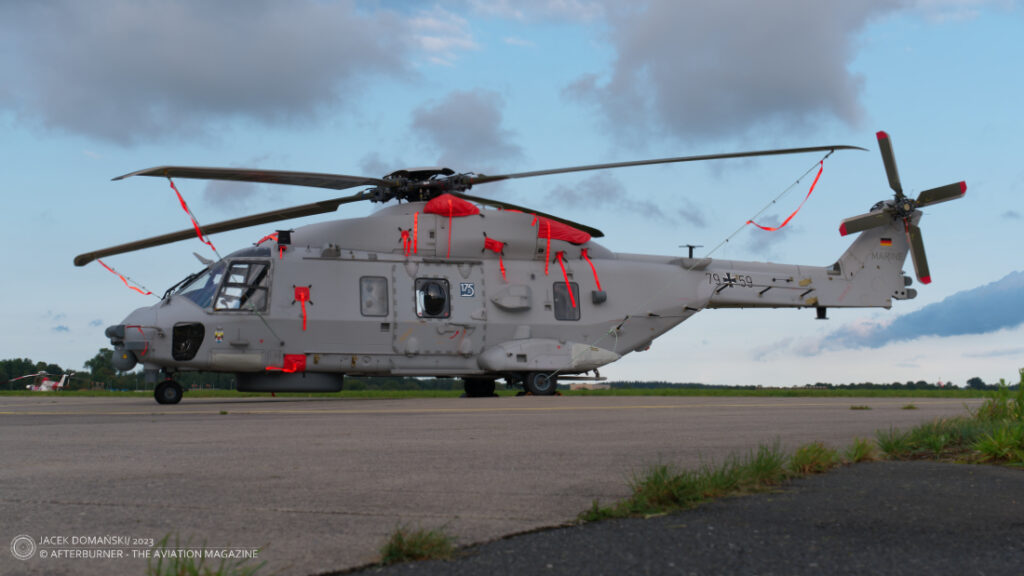
Usually, the real SAR operations are performed in severe weather conditions and the SAR crews are widely known from their ability to fly in literally any weather conditions. This was practically proven during the Flying Challenge that began in the afternoon and was marked by several heavy rainstorms and windstorm.
In spite of the weather, all competitions of the Flying Challenge were successfully completed. They included cross-country flight to prove precise navigation skills of the participating crews and a contest in SAR winching and providing rescue to people in distress.
In addition to the Flying Challenge, the crews also participated in Highland Games that were held next day, during the family event at the base.
The 2023 SAR Meet Trophy was won by the 243rd Helicopter Squadron from the Czech Republic. The Czech crews took the first (Mi-17) and third (W-3A) place in winching competition, as well as were the second in the navigation contest (W-3A). In addition, they also won the first place in Highland games. The first place in the navigation competition went to the Belgian Air Component.
On Saturday morning, the spotter event was also organized at the base. The lucky spotters – as early in the morning the weather finally cleared after the storm of yesterday and offered some perfect light conditions – were able to go through static display of all helicopters participating in the meeting, as well as to see some additional, no less interesting aircraft.
At the static display, MFG 5 presented not only the Sea King Mk 41 and the NH90 Sea Lion, used in the SAR operations, but also the anti-submarine Super Lynx Mk 88A – the latter was carrying an impressive livery to celebrate forty years of operational service of that helicopter type with Marineflieger. Nevertheless, it was not the only special livery that could be seen there during the spotter day. Shortly after opening the event, another rotorcraft appeared over the Nordholz runway, this time wearing paint scheme commemorating fifty years of the Sea King in German SAR service. After a short flying display, the helicopter joined the static display at the base.
It was also a kind of farewell with the German Sea King helicopters. Their active duty was officially concluded at the beginning of August 2023 and, within 2024, they are going to be succeeded in full scope of the SAR duties over the Baltic and North Seas by NH90 Sea Lions.
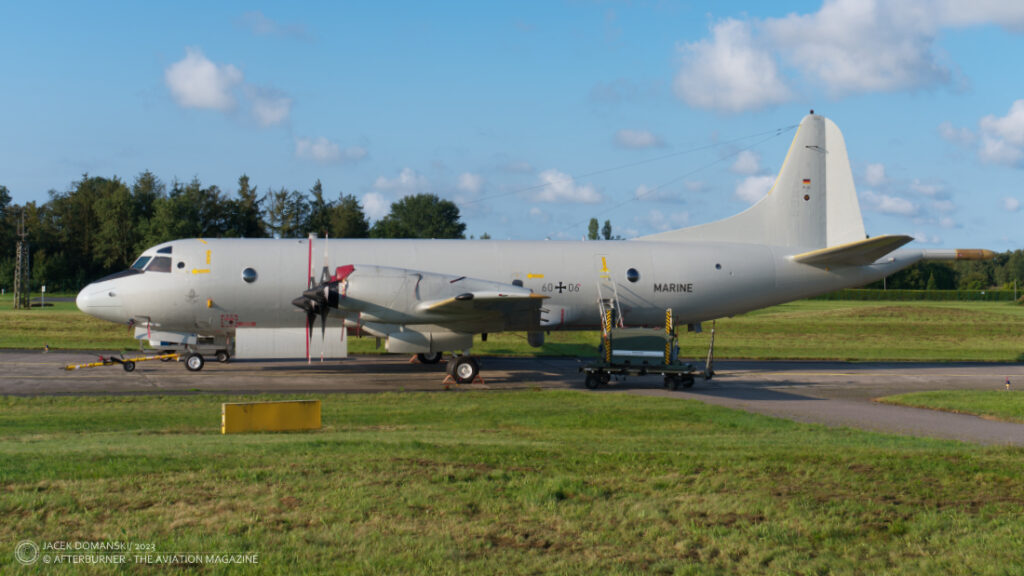
Moreover, the year 2024 will be also the final for the Super Lynx rotorcraft and their active service with the German Navy. The remaining helicopters of that type are planned to be retired and replaced by NH90 Sea Tiger until the end of 2025.
Another German Navy aviation unit based at Nordholz, Marinefliegergeschwader 3 (MFG 3 – Naval Air Wing 5), displayed its Lockheed P-3A Orion marine patrol aircraft. It was one of the last possibilities to take some close-up photos of that aeroplane as the German Orions are currently being successively retired from active service. The P-3A in German Navy service will be shortly succeeded by Boeing P-8 Poseidon and the remaining Orion aircraft will be acquired by Portugal (click here for further details).
Kampfhubschrauberregiment 36 (Attack Helicopter Regiment 36) from Fritzlar joined the static display with EC665 Tiger and the Airbus company presented its EDAS Harfang, Medium Altitude Long Endurance unmanned aircraft system, this time configured for the search and rescue duties.
An exhibition of historical aircraft was another interesting part of the abovementioned static display in Nordholz. It included Sikorsky H-34G and Bristol Sycamore Mk 52 helicopters, as well as Dornier Do 28D2 Skyservant aeroplane.
The next edition of the Galileo SAR Meet, following the tradition, should be organized by the 24th Air Transportation Base in Prague-Kbely, the home of the 243rd Squadron. According to the latest – although still not officially confirmed – information, the event in Prague is planned for 2025.
More images from the Galileo SAR Meet 2023:
In this article, European Union Agency for the Space Programme and German Naval Aviation information materials were used.
